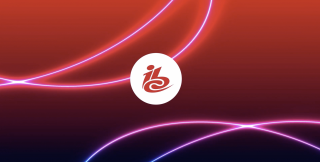Three industry terms to refresh and evolve in 2019
March 27, 2019
We’re well into the new year. The months ahead will be filled with messages of innovation, disruption, and . . . . well, monetization. It was actually the word “monetization” here in our office that sparked talk about some of the most overused terms in our industry. Monetization is certainly not a term that’s in danger of being phased out. In fact, it’s going to be even more prominent as business models and audiences evolve. That said, it did start a fun conversation about some of the terms and phrases getting pretty long in the tooth around.
With Q1 almost in the rear-view mirror, we’re reflecting on all of the new innovations and opportunities surfacing across the video ecosystem. While we operate today with a host of relevant buzzterms like hybridity (more on that below), or converged workflows (linear, non-linear, digital, broadcast), here are some of our picks for terms in serious need of an upgrade:
THE OBVIOUSLY “FRAGMENTED AUDIENCE”
2008 called – it wants its market insights back. We all get it: today’s audiences are connecting with content in multiple ways, over countless device types, platforms, and services (oh my!). We’re far enough past the early days of streaming adoption that there are plenty of industry professionals out there who have not only spent their entire adult lives as multi-screen, multi-platform content consumers, but their entire careers have taken place within a multi-platform delivery ecosystem. To have a conversation about modern video delivery is to accept as a given every audience can be broken out by how they watch, where they watch, and when they watch. The real conversation isn’t about a new phenomenon of audience fragmentation to be mindful of, but more about serving media accurately and more effectively under any circumstance. It’s about keeping the audience engaged no matter the device through a great experience – whether the experience hinges on quality, discoverability, share-ability, or, let’s be honest, price.
ARE WE OVER “OVER THE TOP” YET?
Can we let this one go yet? Of course not. It’s now the de facto way to describe digital delivery as opposed to broadcast. This doesn’t change the fact today’s market is no longer as cut-and-dry as subscriber services vs. over-the-top of subscriber services. It made more sense when serving content “over the top” of other subscriber services sounded revolutionary—because it was. Now that delivering media over the internet is standard operating procedure, it begs the question “over the top of what?” Digital delivery isn’t going over, under, or around anything – and in reality, digital delivery is often going with something else. The obstacles now between you and your audience (other than catching attention to begin with) are technical challenges like latency, metadata management, file size, formatting, hi-def quality demands, etc. So, if we’re stuck with OTT as a term that now means more than it used to, let’s at least agree we’re well into OTT 2.0: an age of mature digital delivery that enhances discoverability, personalizes commerce strategies, and merges broadcast and digital workflows to intelligently evolve along with consumer devices and habits.
ABOUT THAT “MONETIZATION” WORD AGAIN. . .
It’s the word that started the conversation, so it seems apt to wrap with it as well. Looking back at my list, I’m seeing some commonalities: terms we can’t escape, we repeat a thousand times a day, and that’s true meanings continue to evolve. According to Merriam-Webster, monetization as a term was “coined” (I know, bad pun) circa 1879, at which point it literally meant “to establish as legal tender.” It’s of course expanded to mean “extract revenue from,” but the deeper meaning in our industry is much more than the static act of putting a price tag on a program. Hybridity of your monetization strategy is more than just blending subscriber or ad-based approaches. To extract the most value out of content requires context – not just within the relationship that exists with each viewer, but also the relationship of each piece of content with what’s going on in the world, and the ability to pivot accordingly and intelligently.
I should probably add a disclaimer: none of these terms are going away any time soon. We’re sure to be applying each for the foreseeable future. For those of us who eat, sleep, talk, write, and work with these words on a daily basis, we’re always looking for the next great term to repeat into ubiquity. Got any suggestions?




